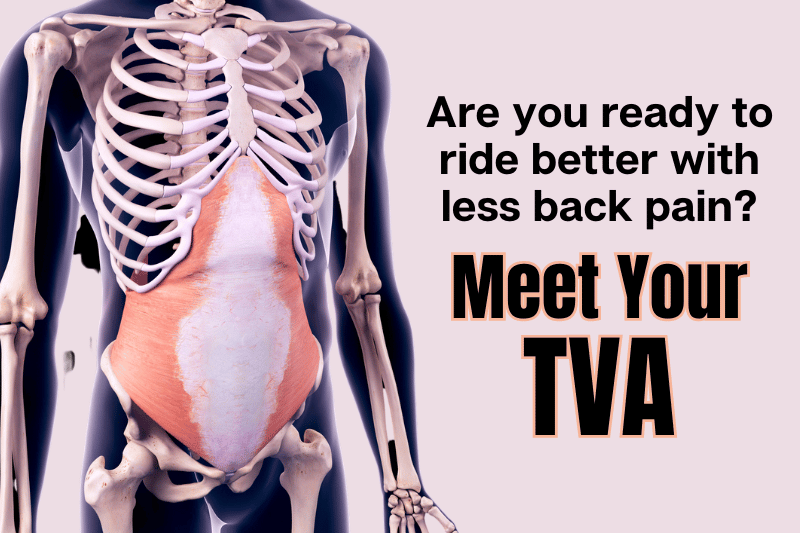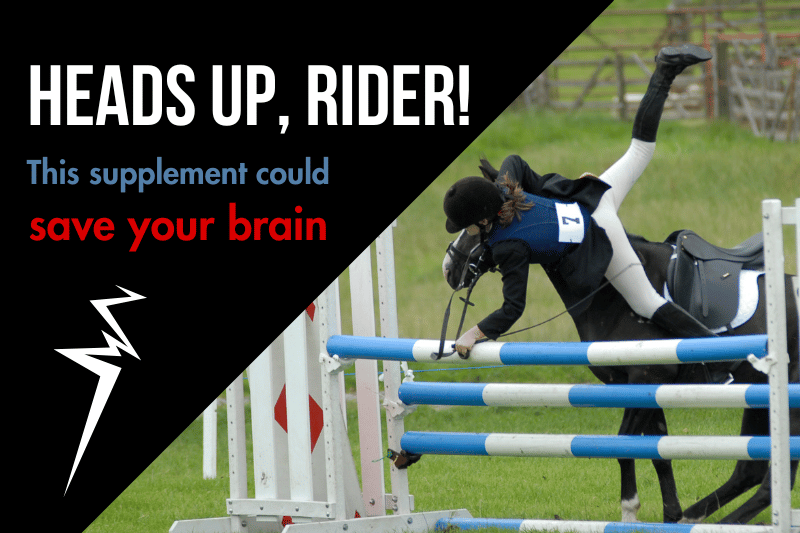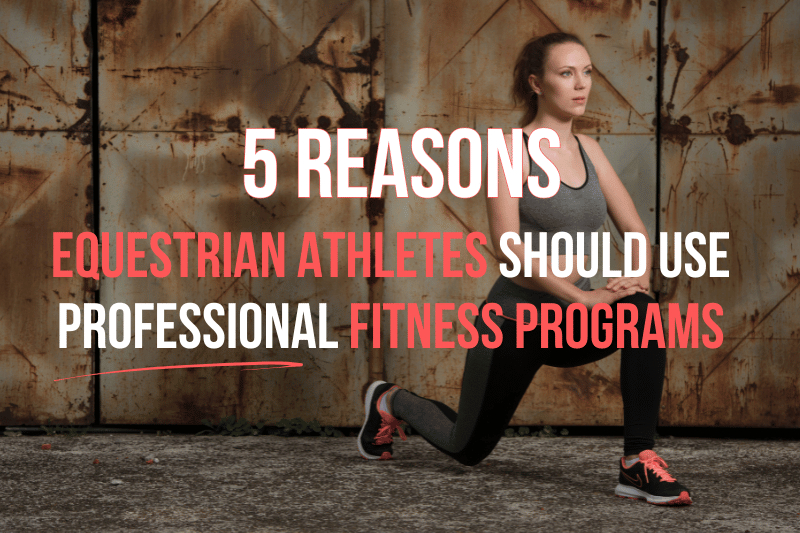What if there was a single muscle that could make you a better, more secure rider and reduce back pain during hours in the saddle?
There is! Ladies and gentlemen, meet your TVA.
Why Your TVA Matters for Rider Fitness
Your transversus abdominis, or TVA, is your deepest abdominal muscle. Unlike the rectus abdominis of six-pack fame, your TVA’s fibers run horizontally. They circle your body to form a natural corset between the bottom of your rib cage and the top of your pelvis.
Why should you care?
The TVA is useful to an average human for many reasons. It supports the spine, holds the visceral organs in place, and makes expulsive movements (like exhalation, urination, defecation, and childbirth) possible. Handy, right?
But for equestrians, the TVA plays an additional role: It is the primary core muscle we use for stability in the saddle.
Have you ever noticed how sitting the trot or canter for a few minutes will really warm you up when riding on a chilly day? That’s because those movements rely on activation of this large, deep muscle.
The good news is that equestrians are more likely than average to have a strong TVA. After all, we need it to perform well in our sport. The bad news is that if our TVAs are weak, our riding will suffer.
Signs of a Weak TVA
A weak TVA is likely to show up as lower back pain. If your lower back feels achy or fatigued after long rides, or even long periods of standing or walking, TVA strengthening may help. (You might also want to run your symptoms past an expert, because back pain can have plenty of other causes as well.)
Another indication of a weak TVA is a pooch or bulge below the naval, despite having tight abs above the naval. Many women experience this after having children, since intentional re-activation of the TVA is often necessary to reverse that postpartum distended belly.
Riders with weak TVAs may also experience increased lordosis, which is forward rotation of the pelvis resulting in excessive inward curvature of the lower spine. This leads us around to back pain again, because lordosis forces us to overuse the extensor muscles in our lower backs rather than relying on strong abdominals to move with our horses.
Benefits of a Strong TVA
Regardless of your TVA’s current status, just about every rider can benefit from strengthening this critical muscle. Doing so will improve your dynamic stabilization (that is, stability during movement), making all physical activity easier and safer. This comes in handy when your horse spooks, because a strong TVA serves as a brace to protect your back from damage during the sudden movement.
You’ll also increase your ability to sit the trot and canter correctly, which is key to staying out of your horse’s way. Need a visual? Amelia Newcomb Dressage illustrates this in their excellent videos on using the correct muscles when sitting the trot and canter.
As mentioned above, a strong TVA dramatically reduces the likelihood that you’ll experience back pain from riding. And, it doesn’t hurt that a tight TVA will make your waist look smaller.
How to Find Your TVA
The first step in strengthening your TVA is to identify the sensation of activating this muscle.
When we think of working our core, we often default to vacuuming or hollowing our stomach, or “sucking it in.” But that’s not the sensation we’re looking for.
Instead, try this:
Lie on your back on the floor. Bend your knees and rest your feet flat. Now, pretend a fat kitty is about to step onto your lower abdomen. Can you feel the muscles between your pelvis and belly button brace? That’s your TVA.
You can also experiment standing up. Think about shifting your weight to balance on one foot, and pay attention to your lower abdominals. Can you feel your lower core tighten in preparation to keep you upright? That’s your TVA.
Once you’re familiar with the sensation of activating your TVA, you’ll find that you can do it anywhere. I’m activating mine right now, as I type this post. You can activate your TVA while doing housework, running, reading, driving, showering…literally anything!
How to Strengthen Your TVA
My favorite way to strengthen my TVA is by activating it throughout the day. Every time I think of it, I simply tighten that internal corset.
Doing this helps me evade low-back soreness during long days of meetings. It also helps prevent those ridiculous injuries that often accompany advancing age — you know, the ones when you throw your back out by tying your shoes or getting out of your car.
You can also perform certain exercises to target your TVA. The good, old forearm plank is one of the best all-around ab exercises that targets your TVA along with other core muscles. Just be sure to do it right.
You can also try dead bugs and bird dogs, which are expertly demonstrated in this video from Mind Pump TV. I particularly like this video for two reasons: First, it is designed to target back pain, which is common in equestrians. Second, it demonstrates an advanced version of the dead bug exercise, which is useful for strong riders whose TVAs are ready to level up.
TVA strengthening is one of those rare activities that has no downside, except in unusual cases of specific injury or truly excessive targeting of the muscle. For rider fitness and less back pain, don’t let your TVA be a stranger.
You might also like
This post includes affiliate links, and I may earn a small commission (at no extra cost to you) when you purchase through these links. I only recommend products and services I think are helpful and useful. Thanks for helping me offset the cost of maintaining this blog as a free resource!



